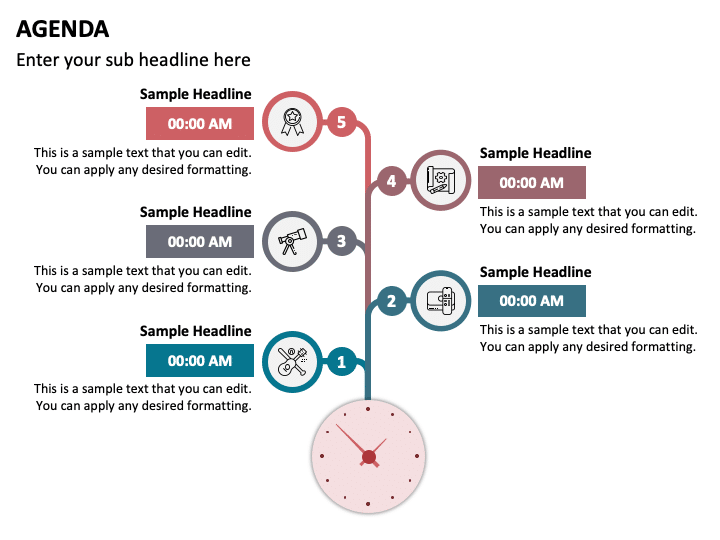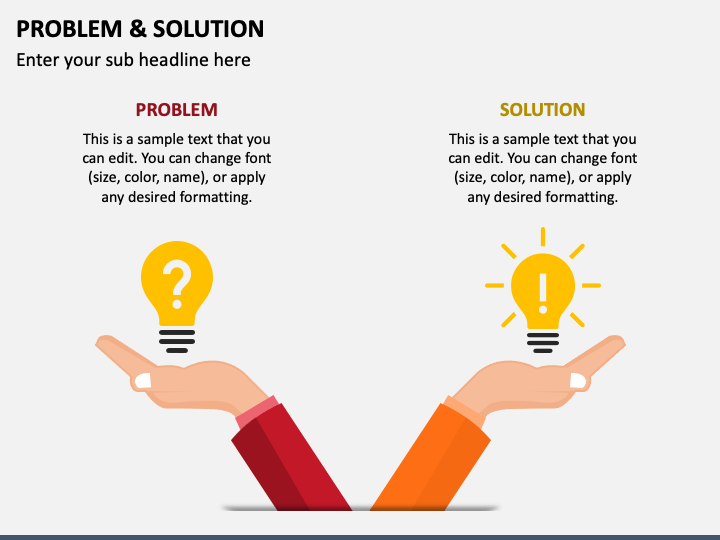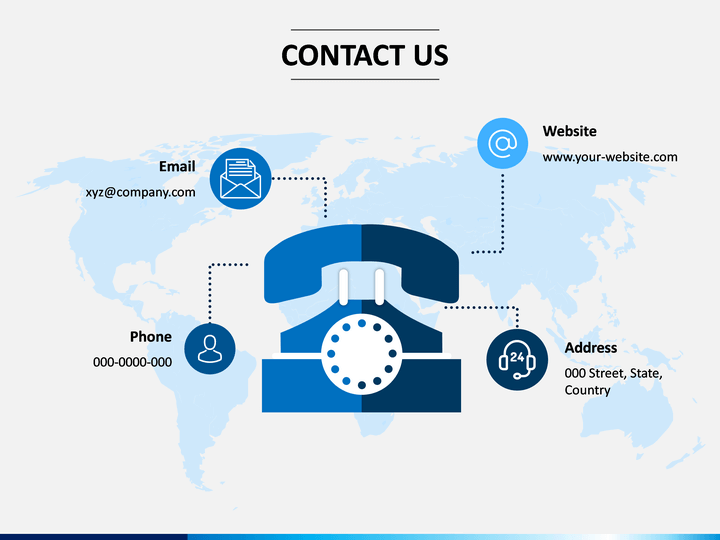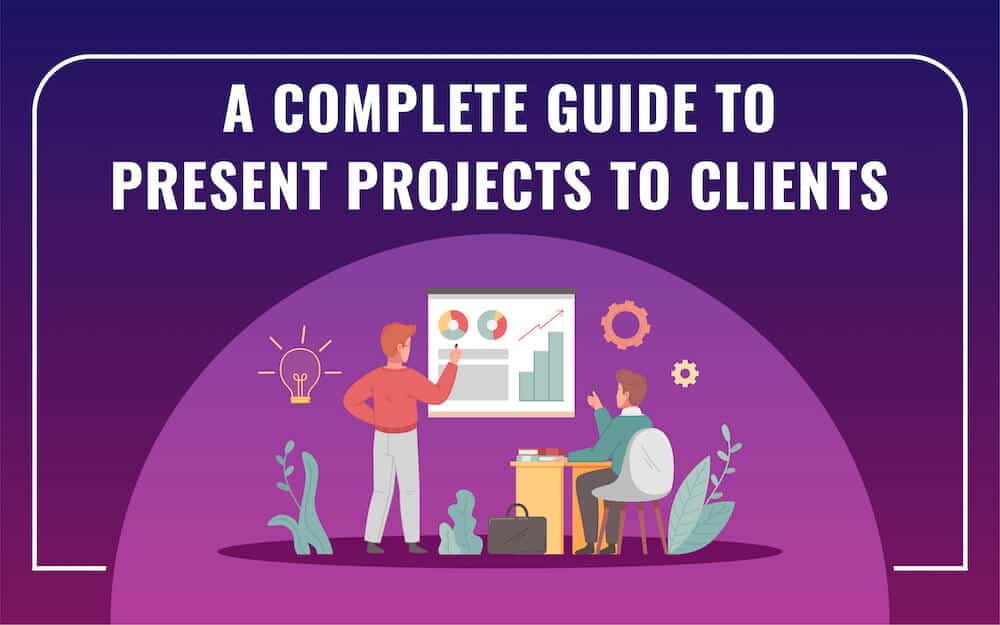Presenting a project to a client is a critical task for any business. It provides an opportunity to showcase your ideas, expertise, and solutions while aiming to secure the client’s interest and approval.
The success of a project presentation hinges on effective communication, engagement, and the ability to address potential challenges or concerns. It requires a well-crafted approach that captures the client’s attention from the outset and maintains their interest throughout the presentation.
In this article, we will take you through the details of how to craft and deliver a successful client presentation. We have divided the article into two parts-
- What Should be Included in Your Client Presentation?
- Challenges Faced While Presenting Projects to a Client & How to Overcome Them?
What Should be Included in Your Client Presentation?
1. Talk About the Agenda

Before diving into the details of your project, it is essential to set the stage by discussing the agenda of the presentation. Briefly outline what you intend to cover, providing a roadmap for the client to follow throughout the meeting. It establishes a clear structure, making it easier for them to engage with the presentation.
Ensure that your agenda includes key points you intend to discuss. Use a captivating visual to highlight these points. By doing so, you exude a sense of professionalism and allow your audience to have confidence in your approach.
2. Show that You Share a Common Vision
Clients want to work with individuals or teams that align with their goals. Demonstrating that you share a common vision and objectives is an effective way to build rapport and trust. You can do so by researching your customer’s company, industry, etc., to gain insight into their values and objectives.
During your presentation, make sure to throw light on the points that resonate well with your client’s vision and highlight how your project aligns with their long-term goals. This will allow you to make them feel understood and display a sense of commitment toward helping them achieve success.
3. Understand their Problem and Showcase Your Product as a Solution

Every project aims to address a specific threat, problem, or challenge. Showcasing your product or service as the ideal solution for consumers’ pain points is an excellent way of acquiring and retaining clients.
For instance, consider that you own a Marketing Agency providing digital solutions to businesses. Your client has recently started a venture and has been in trouble regarding prospects of growth and development as he is focused on traditional methods of marketing. Now, present yourself as the perfect solution for his problems. Tailor your content to fit his needs, and explain how your services offer a practical and innovative solution.
Utilize visual aids, such as Problem and Solution Slides, to help him visualize the benefits of your solution. Be prepared to address any potential objections, queries, or concerns, demonstrating your expertise and problem-solving abilities.
4. Speak with Statistics
Nothing speaks louder than numbers, and statistics serve as the most powerful tool in project presentations. One of the best ways to quantify the impact of your proposal is by presenting relevant statistics and metrics.
For example, if your project provides better software solutions to the potential company, share statistics on how it has benefitted similar organizations and created a stunning difference for them. Present this data in a visually appealing manner to captivate the audience.
Use appropriate formats for different sets of numbers. For instance, to showcase growth over a period of time, you can use line charts, and to draw comparisons between multiple categories, you can use bar graphs.
Explore the world of diagrams and charts here and pick the one that suits your needs- https://www.sketchbubble.com/en/powerpoint-diagrams-charts
5. Include a Market Analysis and Highlight Your Niche
A comprehensive market analysis is vital to showcase your expertise in the field and portray yourself as a credible player in the industry. It is necessary to include market trends, competitor analysis, and potential threats to demonstrate your strategic thinking and preparedness.
It is also necessary to identify your unique selling points and highlight your niche within the market. Illustrate why your project stands out and how it fills a gap that other competitors might not address.
Apple has been an incredible example of this. In 2007, when the company launched the first iPhone, it portrayed the release as a revolutionary breakthrough in the world of technology. It addressed the market trends at that time and highlighted how the iPhone would bridge the gap between customers and existing smartphone limitations.
This allowed Apple to create a competitive edge, stand apart in the market, and grow enormously.
Watch here – https://www.youtube.com/watch?v=x7qPAY9JqE4
6. Brief them About Potential Risks
When presenting a project, it is vital to be transparent and realistic about potential risks and challenges. While it may be tempting to focus solely on the positive aspects, addressing risks demonstrates that you are prepared to handle any obstacles that may arise.
The first step is to identify and prioritize the major threats associated with the project. These could be technical, financial, market-related, or related to resources and timelines. By putting them in order based on their potential impact and likelihood of occurrence, you can show the client that you have a comprehensive understanding of the potential pitfalls.
Once you have identified the risks, it is essential to present your risk mitigation strategies. Explain the steps you will take to minimize the impact or likelihood of each risk materializing. Providing specific and confident strategies reassures the client that you have carefully considered how to address challenges.
Moreover, this discussion also presents an opportunity to showcase your problem-solving skills. Highlight instances where you have successfully navigated challenges in the past, demonstrating your skill and capability in handling adversity. It not only instills confidence in the client but also reassures them that you are a reliable partner who can effectively manage any hurdles that may arise during the project.
7. End with a Call to Action and Contact Information

Concluding presentations on the right note can be quite a tricky task. If done right, they can inspire action and lead you to the desired results.
Thus, present a call to action in a direct and specific manner. Clearly present what you want the client to do next, whether it’s signing a contract, scheduling a follow-up meeting, or requesting additional information.
You must also display your contact information prominently on the final slide or handout. Include your name, phone number, email, and any other relevant details. By providing this information, you enable the client to get in touch with you for further discussions, questions or to move forward with the project.
Lastly, express gratitude and thank your audience for their time and consideration, and show appreciation for providing you the chance to showcase your ideas and expertise. Ending the presentation on a positive and gracious note leaves a lasting impression and reinforces the enthusiasm that you bring to the table.
Challenges Faced While Presenting Projects to a Client & How to Overcome Them?
Presenting a project successfully is extremely critical. However, the process is not without its challenges. From addressing potential skepticism to ensuring clear communication, several hurdles can impact the success of a project pitch. In this section, we will explore some of the common hindrances encountered while presenting projects to clients and provide insights on how to overcome them.
a). Understanding Client Expectations: Be on the Same Page
One of the most significant challenges is ensuring that you fully understand the client’s expectations and requirements. Miscommunication or misinterpretation of the client’s needs can lead to a misaligned project proposal, resulting in dissatisfaction or rejection.
To overcome this challenge, establish clear and open communication with the client from the very beginning. Schedule preliminary meetings to discuss their objectives, goals, and specific project requirements. Take detailed notes and seek clarification on any ambiguous points.
For instance, consider that you are presenting a marketing campaign proposal to a potential client. During your initial meeting, actively listen to his marketing goals, target audience, and desired outcomes. Based on this information, tailor your campaign strategy to align with their vision. Prepare a comprehensive campaign proposal that includes key performance indicators (KPIs) and measurable objectives.
By being on the same page from the start, you build a strong foundation for a successful presentation and project.
b). Handling Client Resistance: Deal with it Proactively
Handling client resistance is an inevitable part of the project presentation process. As a presenter, it is crucial to deal with resistance proactively to maintain a positive and productive client relationship.
When clients express concerns or objections, actively listen to their feedback, understanding their perspective and acknowledging their feelings. This approach demonstrates empathy and genuine interest, fostering constructive dialogue. Anticipate potential areas of resistance beforehand and be ready to address them during your presentation.
Sometimes, resistance may arise due to specific preferences or requirements. Be willing to accommodate reasonable requests and explore alternative solutions to address their needs while staying aligned with your project objectives.
Educate clients about the finer details of your project and the rationale behind certain decisions. Transparently sharing your expertise and insights can help clients better understand your approach and build confidence in your recommendations. After the presentation, follow up with the client to address any remaining concerns or questions. Provide additional information or clarification if needed.
c). Faltering Attention Span: Craft a Compelling Narrative
It is a presenter’s biggest nightmare to see yawning and uninterested faces in front of him. Thus, it is an onerous challenge to keep the audience actively engaged throughout the presentation.
Well, to avoid this, instead of bombarding clients with dry data, use storytelling to showcase the challenges and struggles that your project addresses. By humanizing the problem and connecting it to real-life scenarios, the audience becomes emotionally invested in finding a solution. You can also incorporate visuals and videos into your presentation.
For instance, if you are developing a mobile application for education, allow your clients to experience the app in real-time. Display a QR code from where they can download the app on their devices, and provide them with a beta version to experience the magic of your creation. This will drastically enhance engagement and increase participation.
d). Bottleneck Deadlines: Be Transparent and Honest
Bottleneck deadlines can be quite frustrating and can hamper the productivity of the project. Thus, it is necessary to address them promptly with transparency and honesty.
During the presentation, openly discuss the potential bottleneck deadlines and explain their implications on the overall timeline. Acknowledge that certain aspects of the project may be outside of your immediate control but assure the client that you are proactively monitoring these critical points and have contingency plans in place. Being transparent about potential delays demonstrates your commitment to managing the project effectively and fosters trust with the client.
Let us understand with the help of an example- suppose you are presenting a website development project to a client. During the presentation, you identify that obtaining content from various departments within the client’s organization might cause bottlenecks. Be upfront about this potential challenge and assure the client that you have dedicated resources to follow up on content submissions and that you will provide regular updates on project progress. This open and honest approach builds a strong foundation for managing client expectations and addressing potential delays effectively.
e). Unexpected Questions: Remain Calm and Carry Placards
Unexpected or challenging questions can get you cold feet and even create moments of uncertainty.
To overcome this, preparation is key. Anticipate potential inquiries that may arise based on the project’s details, scope, or market dynamics. Practice your responses to these questions, ensuring you remain confident and composed while delivering your answers.
If a question catches you by surprise, avoid rushing into a response. Take a moment to gather your thoughts, and if necessary, use placards or presentation aids to illustrate your points visually. Placards can be valuable tools to organize your thoughts and keep the presentation flowing smoothly.
For instance, imagine that you are presenting a software development project, and the client asks about potential data security measures. While you have addressed security in your proposal, the client seeks more specific information.
In such a situation, remain calm and confidently use placards or visual aids to demonstrate the protocols. This approach not only enhances your explanation but also shows your preparedness and professionalism.
Conclusion
A well-structured and engaging project presentation not only secures the client’s approval but also lays the foundation for a fruitful and collaborative partnership. It establishes your credibility, makes room for new opportunities, and fosters growth. Thus, it is necessary to devote your energy to mastering and perfecting your client presentations.
We hope this article serves as a lightroom for your next presentation endeavor and helps you navigate through its challenges.
Looking For Powerpoint Design Agency?
Call Pursho @ 0731-6725516
Telegram Group One Must Follow :
For Startups: https://t.me/daily_business_reads
#Include #Deal #Challenges




